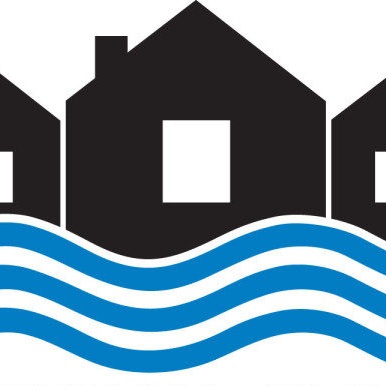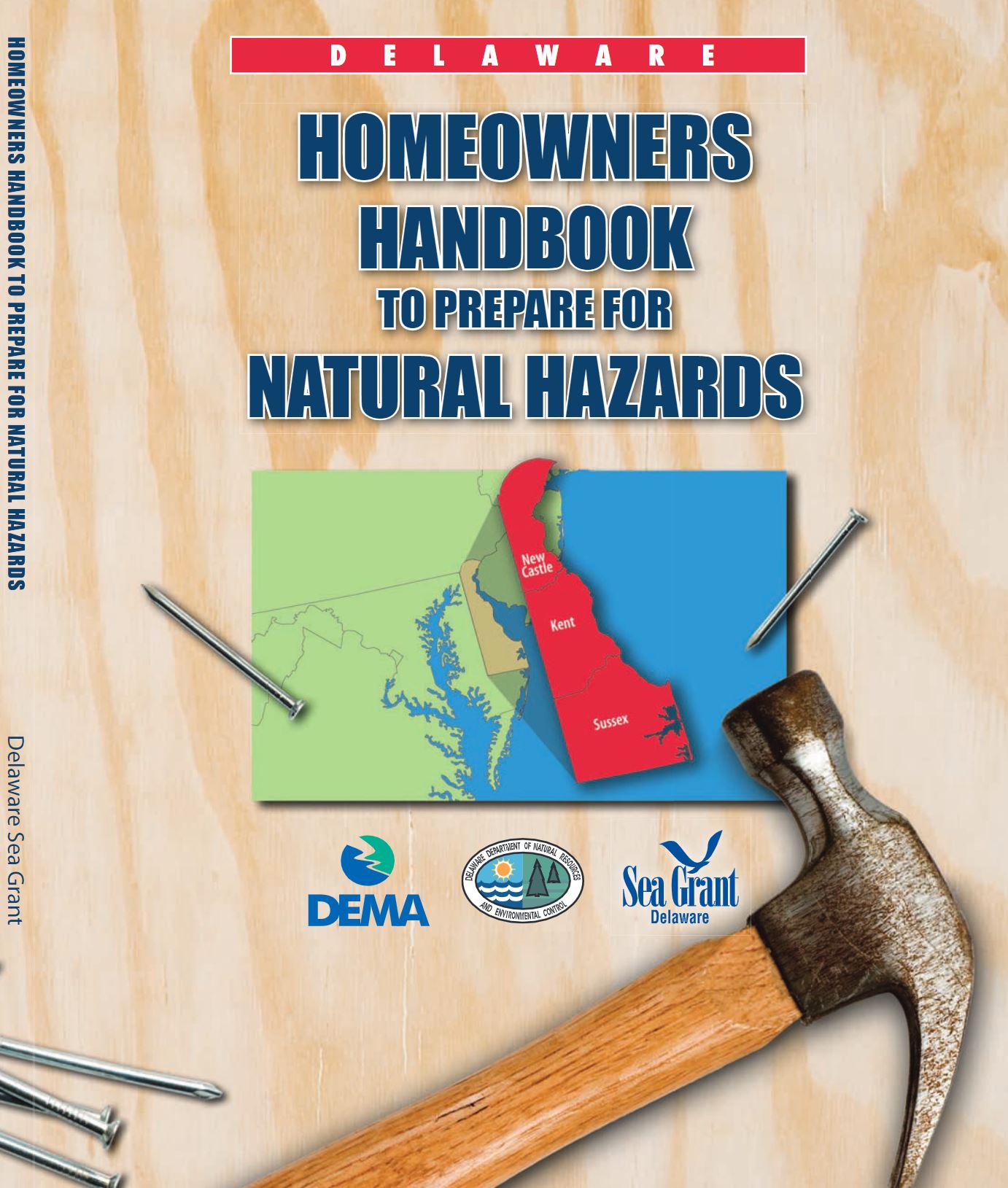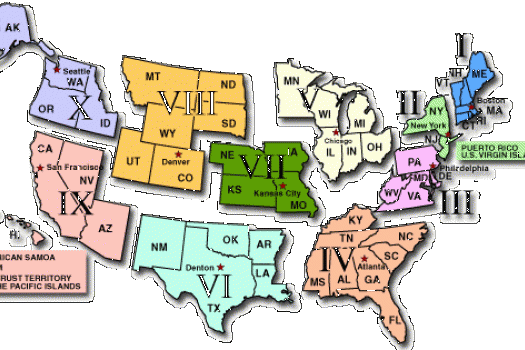Sea Level Rise
The effects of sea level rise on the Delaware coast are already apparent in the increased sunny day flooding that occurs during high tides. Delaware could see as much as a 5-foot increase in sea level by the year 2100.
In addition, climate change is expected to bring larger and more frequent storms to the Delaware coast. Coupled with higher sea level, the Delaware coast will see larger storm surges than at any time in the past.
Communities and individuals need to understand the risk of flooding that Delaware faces and adapt to meet the challenge.
Delaware Sea Grant has partnered with the US Geological Survey and the Delaware Department of Natural Resources and Environmental Control to help communities visualize the threat that increased flooding poses to communities, people, and infrastructure. Click on the map below to explore how a 1-7 foot rise in sea level above Delaware’s historic sea levels will impact coastal communities.
What Does a 100-year Flood Mean for Your Community?
Large floods are often designated as 100-year flood events, but the term 100-year flood does not mean that such a flood occurs once every 100 years. 100-year floods can happen at any time.
A 100-year flood has a 1% chance of occurring in any given year. Put another way, a 100-year flood has a 26% chance of occurring during any 30-year period, a common length for mortgages.
In these interactive maps, you can view how far water is expected to penetrate inland around Delaware’s coastal communities during a 100-year flood. You can also use these maps to explore the extent of historical flooding in Sussex County communities during Hurricane Sandy and Delaware’s 1998 Nor’easter.
Flood Insurance
Floods can happen anywhere, at any time. You do not need to live near water to be flooded.
Just a few inches of water from a flood can cause tens of thousands of dollars in damage.
Floodwaters don’t stop at a line on a flood map. You may not be required to buy flood insurance, but your home could still be at risk for flooding.
More than 20 percent of flood insurance claims come from people outside of mapped high-risk areas.
Most homeowners insurance doesn’t cover floods. Only a flood insurance policy will cover flood damage.
The National Flood Insurance Program
The National Flood Insurance Program (NFIP) is a federally-backed flood insurance system that is administered through private insurance companies. Without NFIP, many insurance companies would not offer flood insurance policies because the risk of an overwhelming number of claims is extremely high.
Flood Insurance Rate Maps
Dewey Beach FIRM. Source: FEMA
A community’s flood risk considers river flow, storm tides, rainfall, and coastal storm surge, among other factors. This information is used to create federal Flood Insurance Rate Maps (FIRMs). A FIRM illustrates the extent of flood hazards in a community by depicting flood risk zones and is used to determine the floodplain development regulations that apply in each flood risk zone and who must buy flood insurance.
A FIRM will generally show a community’s 100-year flood extent, flood elevations, flood zones, and floodplain boundaries. As a property owner/renter, you can use this map to get a reliable indication of what flood zone you’re in. However, maps are constantly being updated due to changes in geography, construction/mitigation activities, and meteorological events. Therefore, for a truly accurate determination, contact your insurance agent or company, or your community floodplain manager.
Special Flood Hazard Areas
Land areas that are at high risk for flooding are called Special Flood Hazard Areas (SFHAs) or floodplains. These areas are indicated on the Flood Insurance Rate Maps (FIRMs). There is a 26% chance that a 100-year flood will occur in an SFHA during the period of a 30-year mortgage.
Homeowners Insurance vs. Flood Insurance
Homeowners insurance does not cover flood damage. Flood insurance must be purchased as a separate policy.
If you live in an SFHA and have a federally-backed mortgage, you are required to purchase a flood insurance policy.
Flood insurance can cost as low as $129 per year for a Preferred Risk Policy, available in medium-to-low-risk areas, depending on the level of coverage chosen. Rates are based on the level of flood risk posed to the property. NFIP flood insurance is not available in certain areas designated Coastal Barrier Resources Act zones or Other Protected Areas.
Buildings and contents are typically covered by flood insurance; however, separate policies are required for high-risk flood areas. For residential buildings, maximum coverage is $250,000 for the structure and $100,000 for its contents.
Typically, there’s a 30-day waiting period from the date of purchase before your policy goes into effect. So while you may purchase flood insurance just prior to a flood, the coverage may not take effect for 30 days. Communicate with your insurance agent about the 30-day waiting period.
Talk to Your Insurance Agent about Flood Insurance
Your insurance agent is one of your best resources for getting the flood insurance policy that’s right for your home and your risk level. You should ask your insurance agent the following questions:
How much coverage should I get for my building and for my contents?
What options do I have to reduce my premium?
Are there additional expenses or agency fees I should be aware of?
Will my policy provide Replacement Cost Value or Actual Cash Value? And what is the difference between the two?
Who should I call if I have a flood claim?
How can I pay for my policy?
How will my policy be renewed?
What flood zone do I live in? What is my property's flood risk?
Is flood insurance mandatory for my property? Will the lender require it?
Even if my lender doesn’t require flood insurance, do I still need it?
Do I qualify for a Preferred Risk Policy?
Does my community participate in the NFIP Community Rating System (CRS)? If so, does my home qualify for a CRS rating discount?
What will and won't be covered against flood damage?
Will my flood insurance policy be backed by the federal government?
Elevation Certificates
Your insurance agent may ask you for an elevation certificate. This certificate verifies the elevation of the lowest floor of your house relative to the ground. It is especially important if your house/building is in a high-risk flood area. An elevation certificate is only required if your building was built, or substantially improved, after the community's initial FIRM. If your community participates in the Community Rating System, local officials may already have a copy of your home’s elevation certificate on file.
Preparing for a Flood
Floods can happen any time and any place. And they can happen fast. So whether you live near the water or not, you should always be ready.
The first step in protecting your home and family is purchasing flood insurance. But even after you’re covered, there are still a few things you can do to maximize your coverage and assure your safety:
Take photos of your most valuable possessions. Store copies with other documents.
Save and store receipts for any expensive household items so that you have proof of original cost.
Make an itemized list of other possessions, such as clothing, books, small kitchen appliances, etc. You don’t have to note every item and its cost, but the more comprehensive your list, the better.
Review your insurance policy (or policies) and ask questions to make sure you have the proper level of protection.
When the National Weather Service issues a flood watch, monitor potential flood hazards on NOAA Weather Radio All Hazards.
Copy your most important documents (mortgage papers, deed, passport, bank information). Keep copies in your home and store originals in a secure place outside the home, such as a bank safe deposit box.
Have an Emergency Plan:
Provide your insurance agent, employer and family with emergency contact information, so that you can be reached after a flood.
Prepare an emergency kit – don’t forget a flashlight and spare batteries.
Keep a minimum 3-day supply of nonperishable food and bottled water on hand.
Include a battery-powered radio in your emergency kit. Even if you never experience a flood, you’ll be glad to have this kit during a power outage.
Visit www.ready.gov for more information and details about what to include in an emergency supply kit.
Be Safe During a Flood:
When a flood warning is issued, heed official instructions.
Don’t walk through a flooded area. Just six inches of moving water can knock you down.
Don’t drive through a flooded area. A car can easily be carried away by just two feet of floodwater. More people drown in their cars than anywhere else during a flood.
Keep away from downed power lines and any other electrical wires. Electrocution is often a major cause of death in floods.
Watch out for animals that have lost their homes during a flood. Animals may seek shelter in your home and aggressively defend themselves.
To learn more about staying safe before and during a flood, visit FloodSmart.gov.























